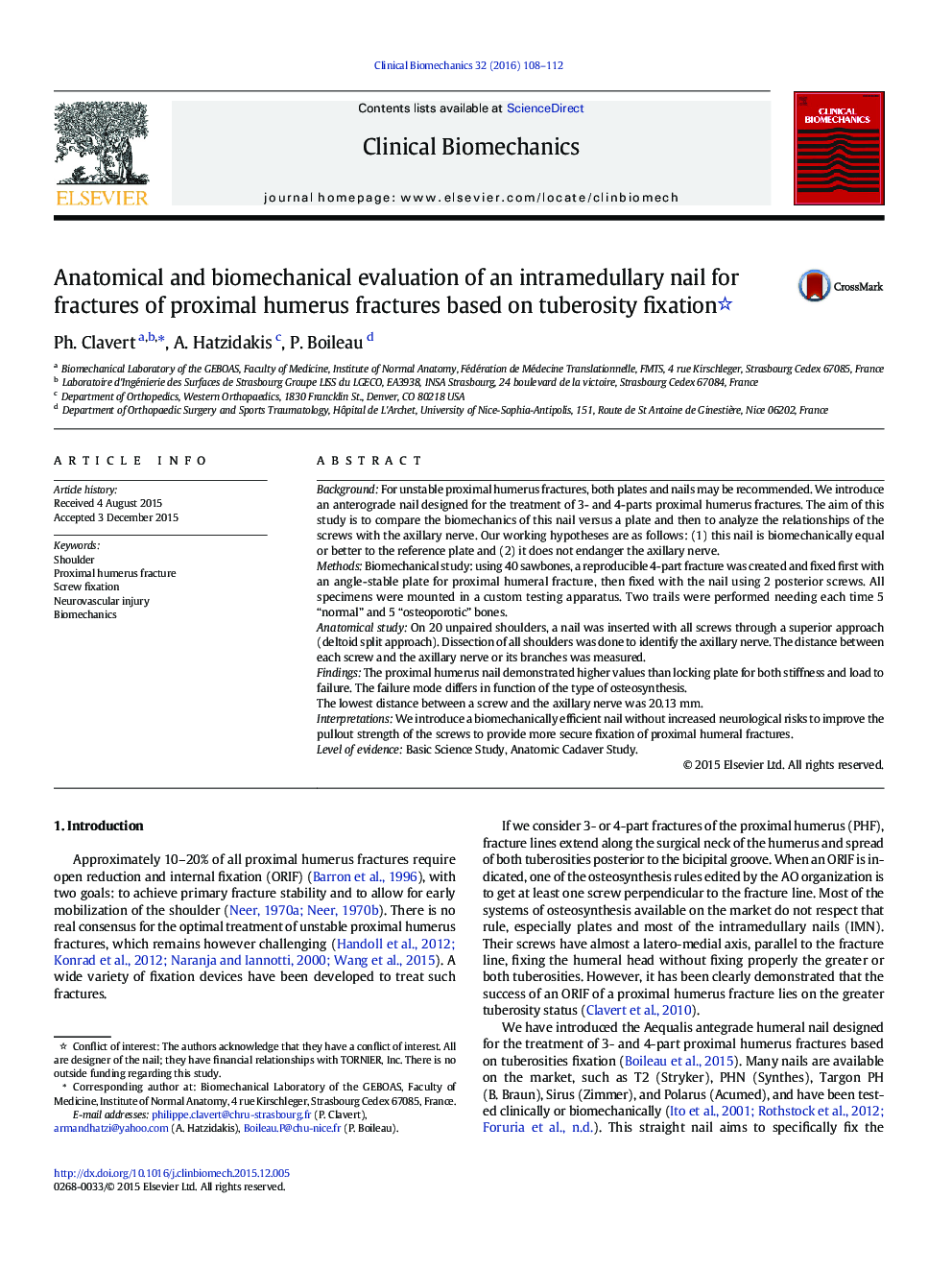| کد مقاله | کد نشریه | سال انتشار | مقاله انگلیسی | نسخه تمام متن |
|---|---|---|---|---|
| 6204610 | 1603746 | 2016 | 5 صفحه PDF | دانلود رایگان |

- Biomechanical and anatomical studies of a nail designed for humeral tuberosities fixation
- Two postero-anterior screws fixation is equal to a lateral plate with locking screws
- Decreased risk of glenoid erosion in case of necrosis
- Axillary nerve is not at risk
BackgroundFor unstable proximal humerus fractures, both plates and nails may be recommended. We introduce an anterograde nail designed for the treatment of 3- and 4-parts proximal humerus fractures. The aim of this study is to compare the biomechanics of this nail versus a plate and then to analyze the relationships of the screws with the axillary nerve. Our working hypotheses are as follows: (1) this nail is biomechanically equal or better to the reference plate and (2) it does not endanger the axillary nerve.MethodsBiomechanical study: using 40 sawbones, a reproducible 4-part fracture was created and fixed first with an angle-stable plate for proximal humeral fracture, then fixed with the nail using 2 posterior screws. All specimens were mounted in a custom testing apparatus. Two trails were performed needing each time 5 “normal” and 5 “osteoporotic” bones.Anatomical studyOn 20 unpaired shoulders, a nail was inserted with all screws through a superior approach (deltoid split approach). Dissection of all shoulders was done to identify the axillary nerve. The distance between each screw and the axillary nerve or its branches was measured.FindingsThe proximal humerus nail demonstrated higher values than locking plate for both stiffness and load to failure. The failure mode differs in function of the type of osteosynthesis.The lowest distance between a screw and the axillary nerve was 20.13Â mm.InterpretationsWe introduce a biomechanically efficient nail without increased neurological risks to improve the pullout strength of the screws to provide more secure fixation of proximal humeral fractures.Level of evidenceBasic Science Study, Anatomic Cadaver Study.
Journal: Clinical Biomechanics - Volume 32, February 2016, Pages 108-112